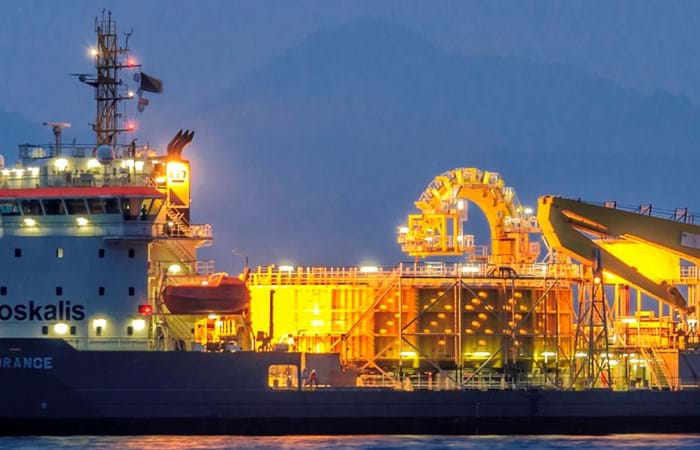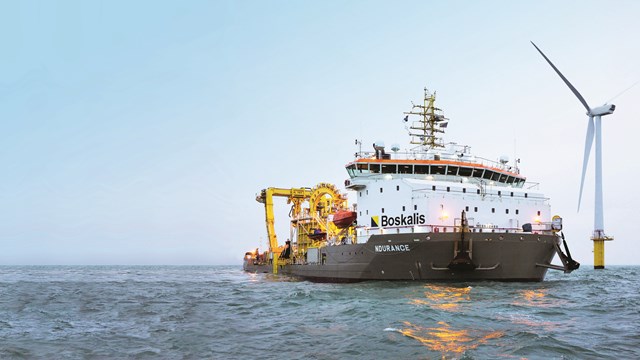The island of Bali has been suffering a constant shortage of power. PLN contracted a Consortium of PT. Boskalis International Indonesia, Sumitomo Corporation and J-Power Systems Corporation to procure and install two 150 kV submarine and underground interconnecting power cables to replace existing cables and to reinforce the link between the electricity grids on the Indonesian islands of Java and Bali.
The cables have the capability to transfer power at 130 MVA per circuit. This project will provide enough additional power to solve Bali's shortage and facilitate the further development of a popular tourist destination, which attracts around 2.3 million tourists each year. Boskalis’ scope ran roughly from the high water mark at Ketapang, Java, to the high water mark at Gilimanuk, Bali and involved the installation of the two submarine cables, including four cable landings. After cable installation, both cables had to be covered with a rock berm over nearly the entire length of the routes. The newly built Cable Laying Vessel (CLV) Ndurance was deployed for the cable installation.
Engineering
One of the most complicating factors was the extremely strong current which occurs in the Bali Strait. Boskalis’ in-house engineering company Hydronamic was involved to analyze the most efficient installation method and period. Based on a current measurement campaign, which lasted over one year, the most favorable installation window was determined. Since Boskalis was also responsible for the cable routes design, an extensive hydrographic survey was undertaken to map the seafloor. This survey and the design parameters specified by the Client were used to design the optimum cable routes, taking the properties of the cables into account. Mitigation of free spans and vortex induced vibrations (VIV) formed part of the engineering work, coordinated by Boskalis' affiliate VBMS. To assess the station keeping capabilities of the Ndurance at this specific location with very strong currents, a series of simulations was performed at the Marin ship simulator. Based on these simulations, it was decided to have an Azimuth Stern Drive (ASD) tug boat stand-by in the direct vicinity of the CLV during cable lay operations to avoid any risk for crew, vessel and cable. Extensive sea trials were undertaken in Singapore and on site to practice and determine the behavior of the Ndurance and the combination of CLV and ASD tug.

